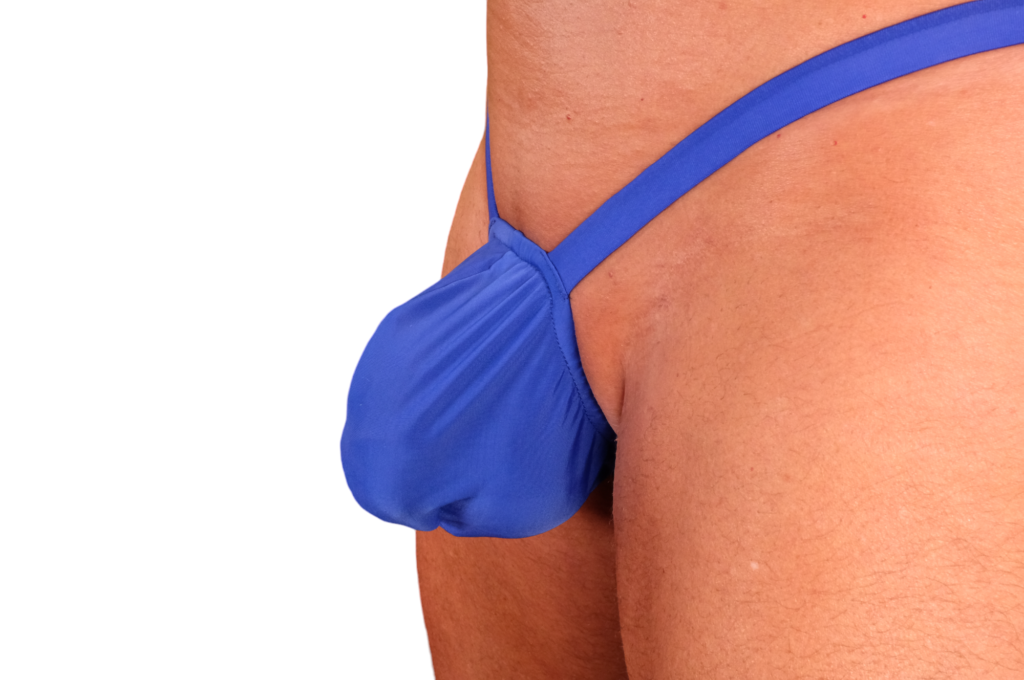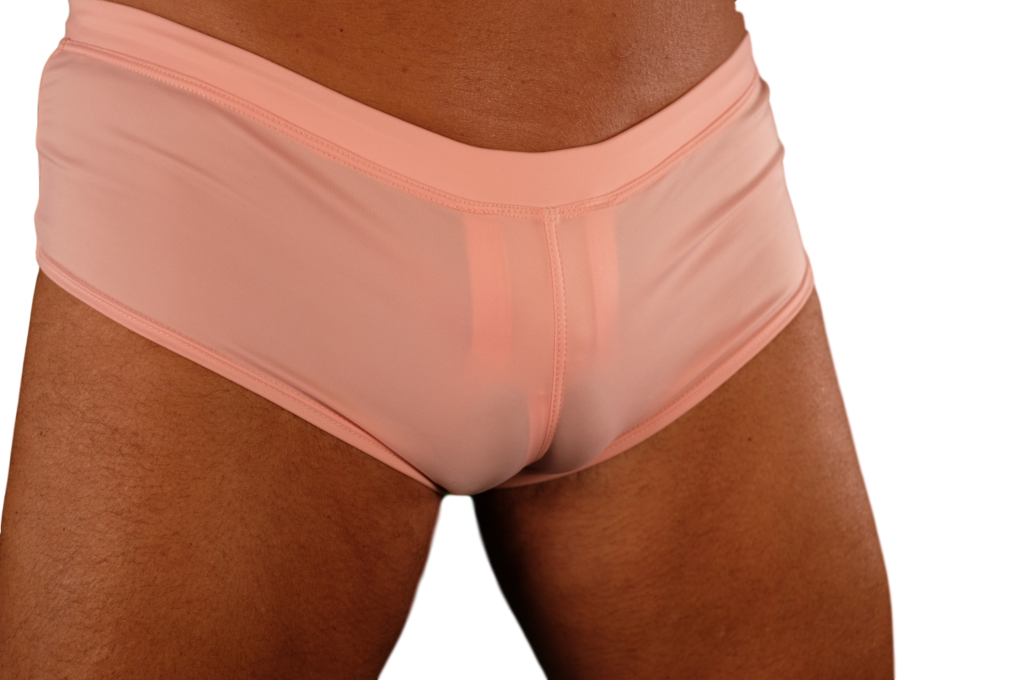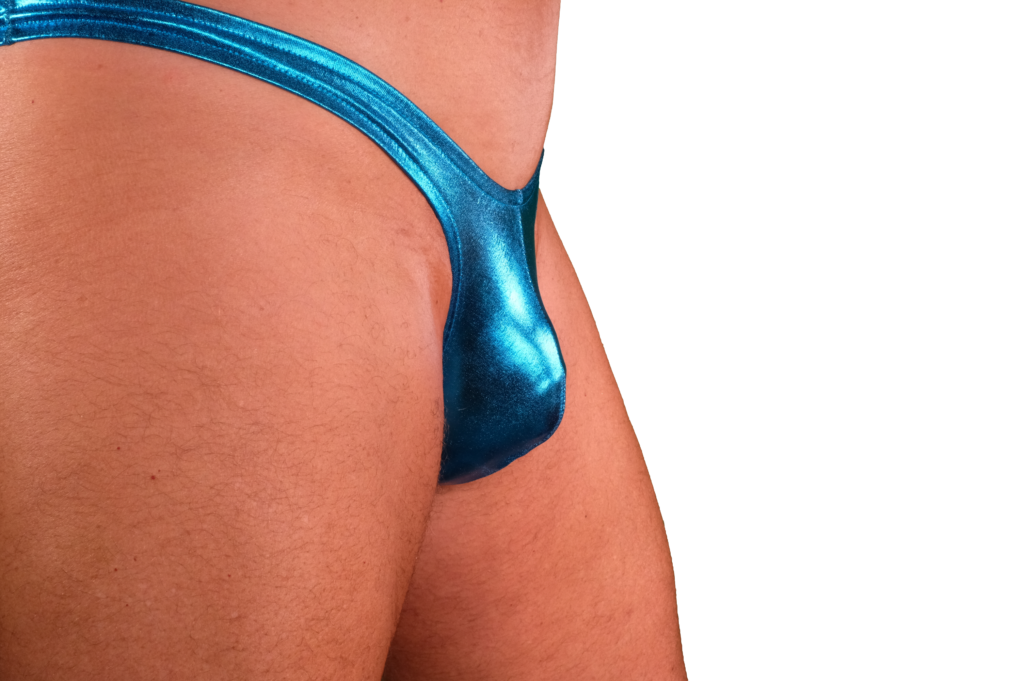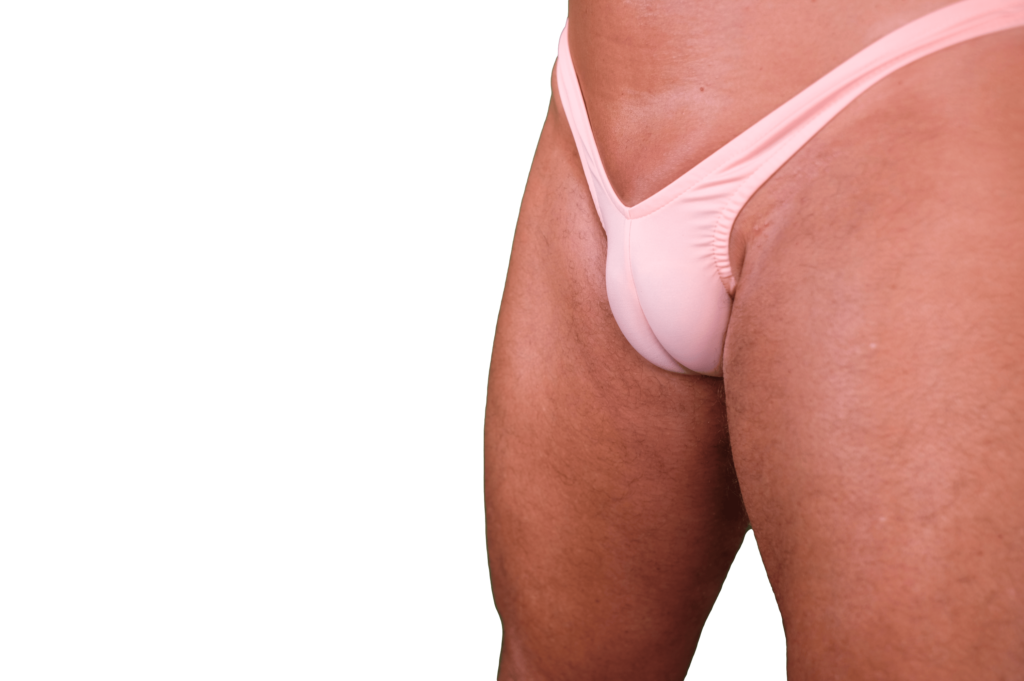The categorization of swimwear styles as “gay” is subjective and can vary based on cultural perceptions, individual preferences, and societal norms. However, certain swimwear designs have been associated with LGBTQ+ culture and aesthetics for various reasons, including historical trends, cultural influences, and representations in media and popular culture. It’s important to recognize that these associations are not universal or definitive, and swimwear styles can be worn and enjoyed by people of all sexual orientations and gender identities.

- MTF and Non-Binary Swimwear Designs: Swimwear designs that cater to transgender and non-binary individuals, such as MTF transformation style swimsuits and gender-neutral designs, are not inherently “gay.” These styles are designed to affirm and accommodate diverse gender identities and expressions, providing options for individuals who may not conform to traditional gender norms. While some people within the LGBTQ+ community may gravitate towards these designs, they are not exclusive to any particular sexual orientation.
- Other Swimwear Styles Associated with LGBTQ+ Culture: Other swimwear styles that have been associated with LGBTQ+ culture include:
- Speedos: Speedo-style swimsuits, characterized by their form-fitting design and minimal coverage, have been popular among gay men for their athletic aesthetic and body-positive appeal. They are often worn at gay beaches, resorts, and pride events, but they are not exclusive to gay men and are enjoyed by people of all sexual orientations.
- Pride-themed Swimwear: Swimwear featuring pride flags, rainbow colors, or LGBTQ+ symbols is often worn as a form of self-expression and solidarity within the LGBTQ+ community, particularly during pride celebrations and events.
- Vintage and Retro Styles: Vintage-inspired swimwear designs, such as high-waisted bottoms and retro prints, have gained popularity among LGBTQ+ individuals for their nostalgic charm and timeless appeal. These styles may evoke memories of past eras and cultural movements within the LGBTQ+ community.
- Drag-inspired Swimwear: Swimwear designs inspired by drag culture, with bold colors, sequins, and dramatic silhouettes, are often worn by drag performers and enthusiasts as a form of artistic expression and celebration of gender diversity.
- Reasons for Association with LGBTQ+ Culture: The association of certain swimwear styles with LGBTQ+ culture can be attributed to a variety of factors, including:
- Representation in Media: LGBTQ+ individuals have historically been underrepresented or misrepresented in mainstream media, leading to the creation of alternative spaces and subcultures where they can express themselves freely. Certain swimwear styles have emerged within these communities as symbols of identity, empowerment, and visibility.
- Cultural Significance: Swimwear styles associated with LGBTQ+ culture may hold cultural significance within the community, representing shared experiences, values, and aesthetics. They serve as a form of self-expression and solidarity among LGBTQ+ individuals, fostering a sense of belonging and pride.
- Fashion Trends: Like any fashion trend, the popularity of certain swimwear styles within LGBTQ+ culture can be influenced by shifts in fashion, style icons, and cultural movements. LGBTQ+ individuals often embrace unique and unconventional fashion choices as a way to challenge norms and express their individuality.
In summary, while certain swimwear styles may be associated with LGBTQ+ culture for various reasons, including historical trends, cultural influences, and representations in media, it’s important to recognize that swimwear preferences are diverse and personal. People of all sexual orientations and gender identities can enjoy a wide range of swimwear styles, and there is no one-size-fits-all definition of “gay” swimwear. Ultimately, gay swimsuit choices should be based on individual preferences, comfort, and self-expression, regardless of sexual orientation or gender identity.
- Body Positivity and Empowerment: Many swimwear styles embraced by LGBTQ+ individuals promote body positivity and empowerment. These styles often celebrate diverse body types, allowing individuals to feel confident and comfortable in their own skin. Whether it’s through inclusive sizing, supportive designs, or bold patterns and colors, LGBTQ+ individuals may gravitate towards swimwear that makes them feel empowered and confident.
- Safe Spaces and Community Events: LGBTQ+ individuals often gather at designated safe spaces such as gay beaches, resorts, or pride events, where they can express themselves freely without fear of judgment or discrimination. Certain swimwear styles may be more prevalent in these spaces as a way for individuals to connect with one another, celebrate their identities, and create a sense of community and belonging.
- Fashion Subcultures: Within LGBTQ+ culture, there are various fashion subcultures and aesthetics that influence swimwear choices. For example, the leather and fetish subculture may embrace swimwear styles with bondage-inspired elements or provocative designs, while the bear community may favor swimwear that celebrates masculinity and body hair. These subcultures often have their own unique fashion codes and preferences that shape swimwear choices.
- Personal Expression and Identity: Ultimately, swimwear choices are a form of personal expression and identity. LGBTQ+ individuals may choose swimwear styles that reflect their personality, interests, and sense of style, whether it’s through vibrant colors, playful prints, or edgy designs. These choices allow individuals to celebrate their authentic selves and express their unique identities in a visible and tangible way.
- Fashion Trends and Influences: Like any fashion trend, swimwear styles associated with LGBTQ+ culture are influenced by trends, influencers, and cultural movements. Social media platforms and online communities play a significant role in shaping fashion preferences and spreading awareness of emerging trends within LGBTQ+ culture. As fashion continues to evolve and diversify, so too will the range of swimwear styles embraced by LGBTQ+ individuals.
Gay Swimsuit styles associated with LGBTQ+ culture are diverse, inclusive, and deeply rooted in personal identity and expression. Whether it’s through body-positive designs, community events, fashion subcultures, or personal preferences, LGBTQ+ individuals have embraced swimwear as a powerful form of self-expression and celebration of identity. By embracing diversity and inclusivity in swimwear choices, LGBTQ+ individuals continue to challenge norms, break barriers, and celebrate their authentic selves in all aspects of life.
- Drag and Performance Art: Drag culture has had a significant influence on swimwear styles embraced by LGBTQ+ individuals. Drag performers often showcase elaborate and theatrical swimwear designs as part of their performances, incorporating elements such as sequins, feathers, and bold colors to create eye-catching looks that blur the lines between fashion and art. These extravagant swimwear styles celebrate creativity, self-expression, and the transformative power of drag as an art form.
- Gender Fluidity and Non-Binary Fashion: Swimwear styles that challenge traditional notions of gender are increasingly embraced within LGBTQ+ culture. Gender-fluid individuals may opt for swimwear designs that eschew binary categories, featuring unisex silhouettes, neutral colors, and minimalist aesthetics. Similarly, non-binary individuals may gravitate towards swimwear styles that allow them to express their unique gender identity outside of conventional norms, embracing fluidity and freedom in their fashion choices.
- Historical and Cultural Influences: LGBTQ+ individuals draw inspiration from a wide range of historical and cultural influences when it comes to swimwear styles. From retro pin-up aesthetics to tribal motifs and ethnic patterns, swimwear designs reflect a rich tapestry of cultural heritage and global influences. LGBTQ+ individuals celebrate this diversity by incorporating elements of cultural symbolism and tradition into their swimwear choices, creating a mosaic of styles that reflects their multicultural identities and experiences.
- DIY and Customization: DIY (do-it-yourself) and customization play a significant role in shaping swimwear styles within LGBTQ+ culture. Many individuals opt to personalize their swimwear through DIY projects, adding embellishments, patches, or alterations to create one-of-a-kind pieces that reflect their personality and creativity. Customization allows LGBTQ+ individuals to reclaim agency over their fashion choices and express themselves authentically, free from the constraints of mainstream trends and commercialism.
- Activism and Social Justice: Swimwear styles within LGBTQ+ culture often serve as a form of activism and social commentary. Pride-themed swimwear, for example, is not only a symbol of LGBTQ+ pride and visibility but also a statement of solidarity with marginalized communities and a call for social justice and equality. LGBTQ+ individuals use swimwear as a platform to advocate for LGBTQ+ rights, challenge discrimination, and celebrate the diversity of human expression and identity.
In summary, swimwear styles associated with LGBTQ+ culture encompass a wide spectrum of aesthetics, influences, and expressions. From drag-inspired extravagance to gender-fluid minimalism, these styles reflect the creativity, resilience, and diversity of LGBTQ+ individuals and communities. By embracing fashion as a form of self-expression and activism, LGBTQ+ individuals continue to shape and redefine the boundaries of swimwear design, celebrating their identities and advocating for a more inclusive and accepting world.


